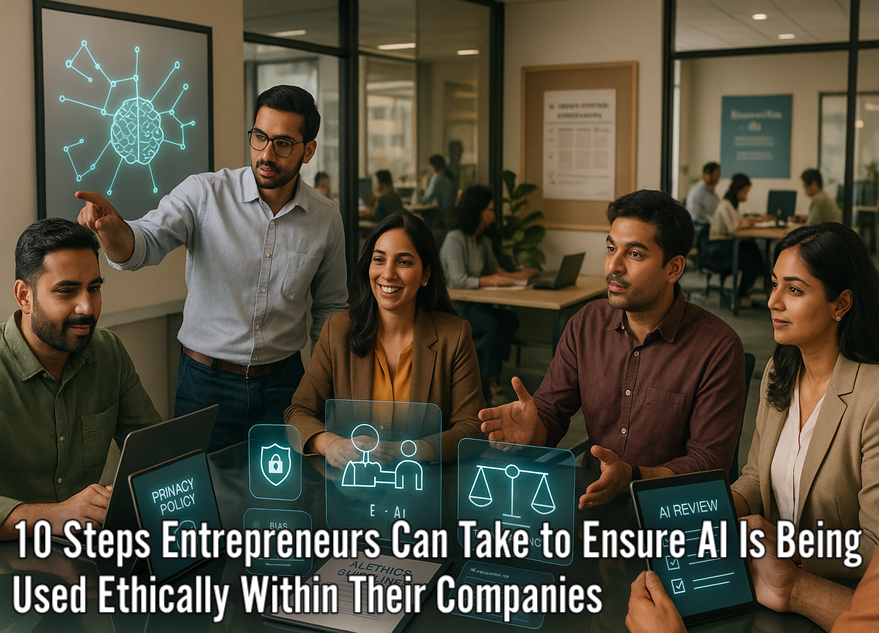Entrepreneurship is a journey filled with both challenges and incredible opportunities. While some entrepreneurs may find early success, many often face barriers that prevent them from reaching their full potential. What if the key to achieving greater success lies not in working harder, but in unlocking hidden potential within? By tapping into untapped skills, embracing innovation, and adopting the right mindset, entrepreneurs can discover new ways to propel their businesses forward. In this blog, we will explore strategies and insights on how entrepreneurs can unlock their hidden potential, overcome obstacles, and pave the way for long-term success.
💡 Are you looking for Coworking space in Gurgaon, Noida or Delhi? We are just a call away.
Call Now: 08999 828282
10 Best Tips on How Entrepreneurs can Unlock Hidden Potential for Success
- Cultivate a Growth Mindset
- Set Clear Goals
- Network with Like-Minded People
- Embrace Innovation
- Learn Continuously
- Focus on Customer Needs
- Leverage Technology
- Take Calculated Risks
- Build a Strong Team
- Manage Stress Effectively
1. Cultivate a Growth Mindset
A growth mindset enables entrepreneurs to view challenges as opportunities for learning. Embrace setbacks as lessons and continually seek ways to improve yourself and your business. This mindset can make a difference in how you approach and overcome obstacles.

2. Set Clear Goals
Clear, specific goals give direction and purpose. Set both short-term and long-term goals that align with your vision. Breaking down larger objectives into smaller steps helps you stay focused and track progress effectively.
3. Network with Like-Minded People
Connecting with other entrepreneurs, mentors, and industry experts opens doors to new ideas, resources, and opportunities. Networking provides valuable insights, support, and potential collaborations that can drive your business forward.
Also Read: What Is The Future Of Entrepreneurship?
4. Embrace Innovation
Innovation is key to standing out in a crowded market. Don’t be afraid to experiment and try new things. Being open to innovative ideas can reveal opportunities and help your business adapt to changing trends.
5. Learn Continuously
Knowledge is power, especially in entrepreneurship. Keep learning by attending workshops, reading industry articles, or taking online courses. Expanding your knowledge enhances your skills, keeps you updated, and helps you make informed decisions.
6. Focus on Customer Needs
Understanding and meeting customer needs can unlock hidden potential by fostering loyalty and attracting new customers. Engage with your customers, gather feedback, and refine your product or service based on their preferences and needs.
7. Leverage Technology
Technology offers tools that can simplify processes, enhance productivity, and expand your reach. Use data analytics, social media, and automation to streamline operations and gain insights that can guide your strategies.
8. Take Calculated Risks
Success often involves stepping out of your comfort zone. By taking calculated risks, you might discover new avenues for growth and innovation. Evaluate risks carefully, consider the pros and cons, and don’t let fear hold you back.
💡 SMBs looking for HR, Marketing, Technology and Funding solutions for their business.
Call Hello Jarvis 994 8000 800
9. Build a Strong Team
Surround yourself with skilled, motivated individuals who share your vision. A strong team can bring diverse skills, ideas, and support, which helps the business grow and adapt. Invest in team development and create a culture of collaboration.
10. Manage Stress Effectively
Entrepreneurship comes with pressure, and managing stress is crucial for sustained success. Practice self-care, set boundaries, and take time to recharge. A healthy mind and body allow you to make better decisions and stay focused on long-term goals.
Unlocking hidden potential is the key to taking your entrepreneurial journey to the next level. By embracing continuous learning, cultivating resilience, fostering innovation, and leveraging the right resources, entrepreneurs can overcome challenges and achieve their fullest potential. A crucial part of this process is surrounding yourself with the right environment and community. That’s where The Office Pass (TOP) comes in. With flexible co-working spaces designed to foster collaboration, creativity, and productivity, TOP provides the perfect setting for entrepreneurs to grow their businesses. Whether you need a private office, meeting rooms, or a motivating environment to spark new ideas, TOP offers the support you need to unlock your success. Call us at 08999 828282.
FREQUENTLY ASKED QUESTIONS (FAQS):
Question: What does “unlocking hidden potential” mean for an entrepreneur?
Answer: Unlocking hidden potential means finding and using skills, resources, or ideas that you might not have realized were valuable. It’s about discovering strengths within yourself and your business that can help you grow in new ways.
Question: How can I find my business’s hidden potential?
Answer: To find hidden potential, start by analyzing what’s working well and what isn’t. Talk to customers, employees, and mentors to get new perspectives. Sometimes small changes or untapped resources can lead to big improvements.
Question: Can personal growth impact business success?
Answer: Yes! Personal growth can lead to better decision-making, stronger leadership, and increased resilience. When you grow personally, you become better equipped to handle challenges and inspire your team, which can boost your business success.
Question: What daily habits help unlock an entrepreneur’s potential?
Answer: Daily habits like setting goals, reading industry news, networking, and reflecting on your progress can help unlock potential. Staying organized, learning constantly, and taking time to recharge are also key habits.
Question: How can networking help me unlock my potential as an entrepreneur?
Answer: Networking connects you with new people who can offer fresh ideas, feedback, and support. It can help you find mentors, partners, or investors who believe in your vision, which can open up new opportunities for success.
Question: How does setting goals unlock potential?
Answer: Setting goals gives you a clear path to follow and motivates you to achieve more. By setting specific and realistic goals, you can focus your efforts on what really matters, helping you grow faster and smarter.
Question: What role does innovation play in reaching hidden potential?
Answer: Innovation lets you think creatively and stay ahead of the competition. By trying new approaches, testing new products, or improving your processes, you can uncover potential that sets you apart from others in your industry.
Question: How can I build a team that helps unlock my business’s potential?
Answer: Hire people who share your vision and bring different skills to the table. A strong team with diverse talents and ideas can bring new perspectives and help you reach goals that would be hard to achieve alone.
Question: How can feedback help in unlocking hidden potential?
Answer: Feedback highlights your strengths and areas for improvement. By listening to feedback from customers, employees, and mentors, you can make better decisions and uncover opportunities you may have missed.
Question: How does embracing failure help in unlocking potential?
Answer: Failure teaches you valuable lessons and helps you understand what works and what doesn’t. Embracing failure as part of your journey can help you build resilience and find new paths to success that you might not have considered otherwise.









